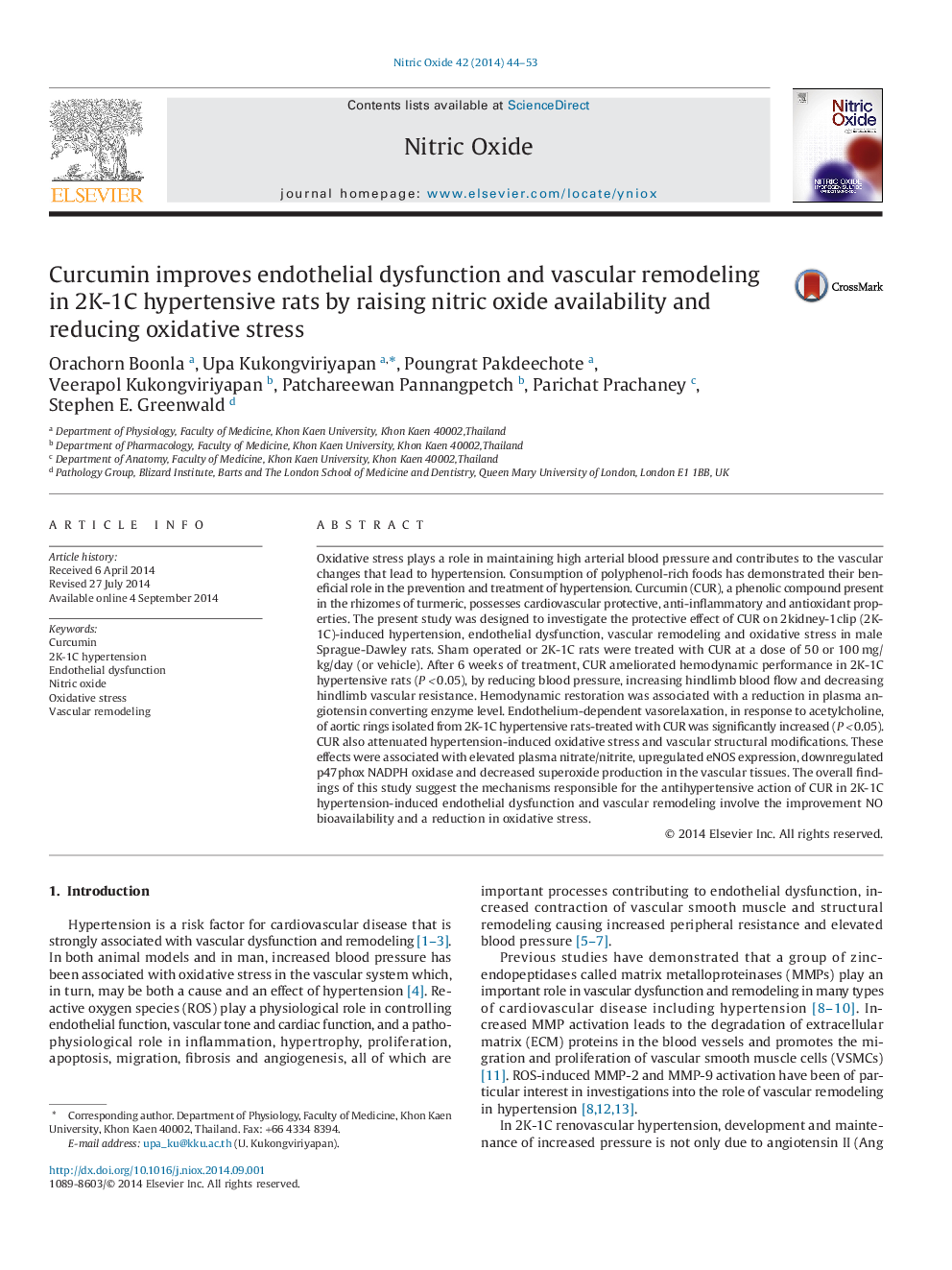| Article ID | Journal | Published Year | Pages | File Type |
|---|---|---|---|---|
| 8345281 | Nitric Oxide | 2014 | 10 Pages |
Abstract
Oxidative stress plays a role in maintaining high arterial blood pressure and contributes to the vascular changes that lead to hypertension. Consumption of polyphenol-rich foods has demonstrated their beneficial role in the prevention and treatment of hypertension. Curcumin (CUR), a phenolic compound present in the rhizomes of turmeric, possesses cardiovascular protective, anti-inflammatory and antioxidant properties. The present study was designed to investigate the protective effect of CUR on 2kidney-1clip (2K-1C)-induced hypertension, endothelial dysfunction, vascular remodeling and oxidative stress in male Sprague-Dawley rats. Sham operated or 2K-1C rats were treated with CUR at a dose of 50 or 100âmg/kg/day (or vehicle). After 6 weeks of treatment, CUR ameliorated hemodynamic performance in 2K-1C hypertensive rats (Pâ<â0.05), by reducing blood pressure, increasing hindlimb blood flow and decreasing hindlimb vascular resistance. Hemodynamic restoration was associated with a reduction in plasma angiotensin converting enzyme level. Endothelium-dependent vasorelaxation, in response to acetylcholine, of aortic rings isolated from 2K-1C hypertensive rats-treated with CUR was significantly increased (Pâ<â0.05). CUR also attenuated hypertension-induced oxidative stress and vascular structural modifications. These effects were associated with elevated plasma nitrate/nitrite, upregulated eNOS expression, downregulated p47phox NADPH oxidase and decreased superoxide production in the vascular tissues. The overall findings of this study suggest the mechanisms responsible for the antihypertensive action of CUR in 2K-1C hypertension-induced endothelial dysfunction and vascular remodeling involve the improvement NO bioavailability and a reduction in oxidative stress.
Keywords
Related Topics
Life Sciences
Biochemistry, Genetics and Molecular Biology
Biochemistry
Authors
Orachorn Boonla, Upa Kukongviriyapan, Poungrat Pakdeechote, Veerapol Kukongviriyapan, Patchareewan Pannangpetch, Parichat Prachaney, Stephen E. Greenwald,
